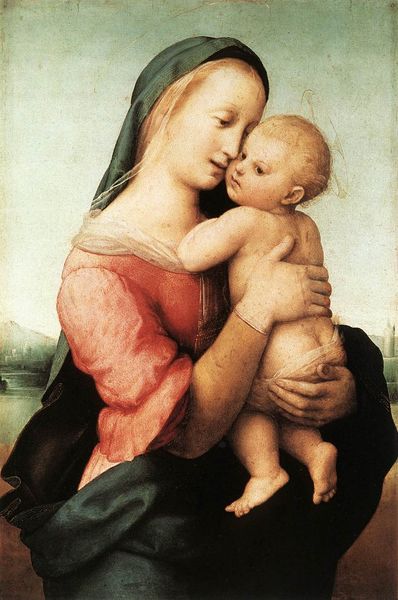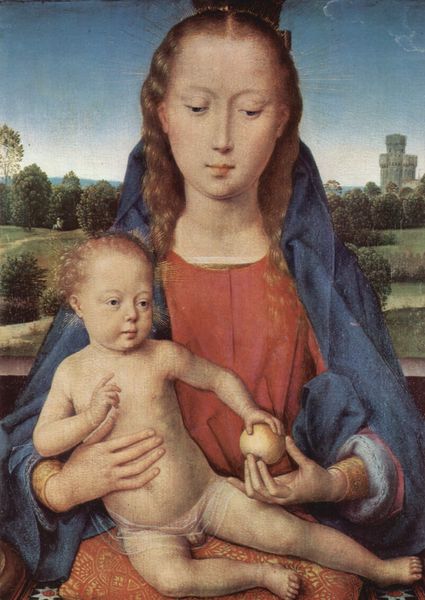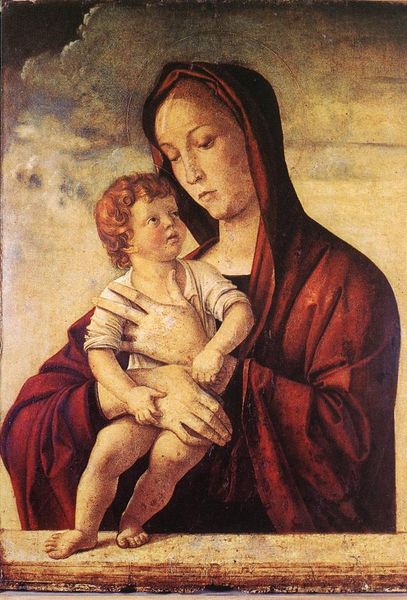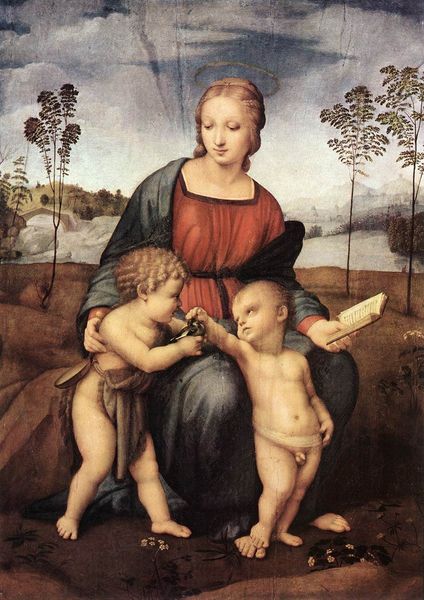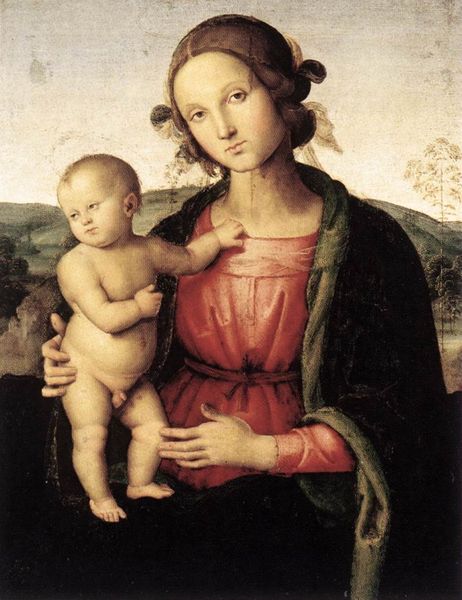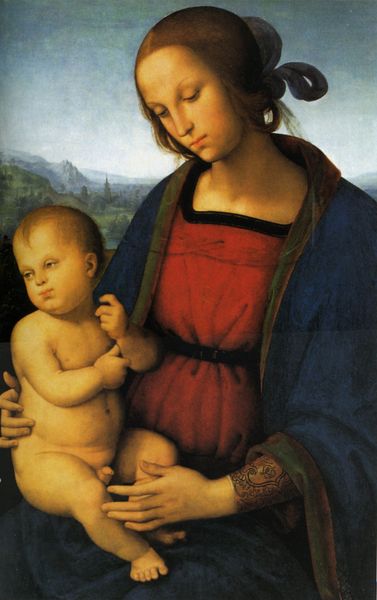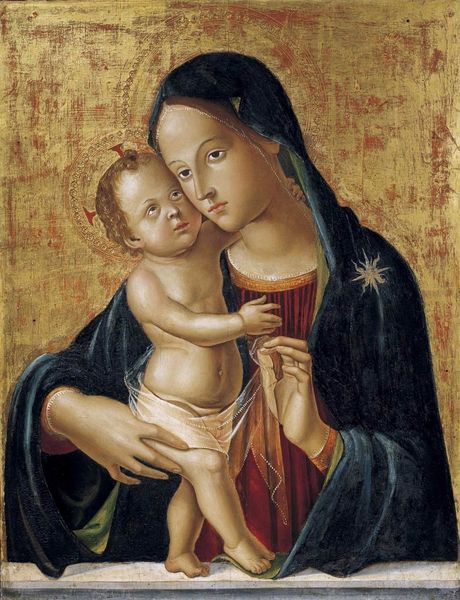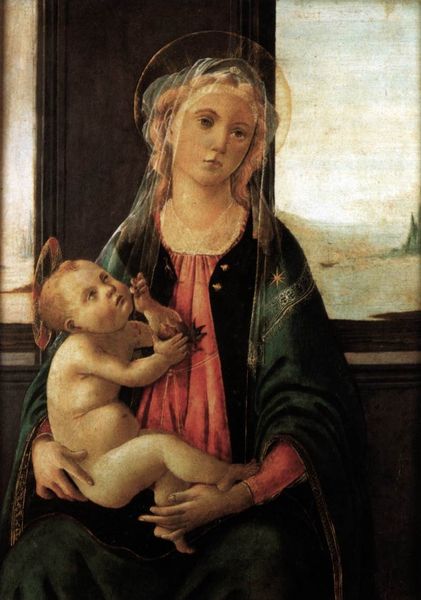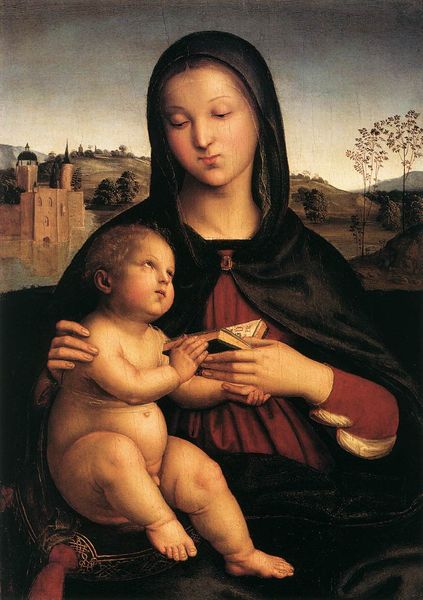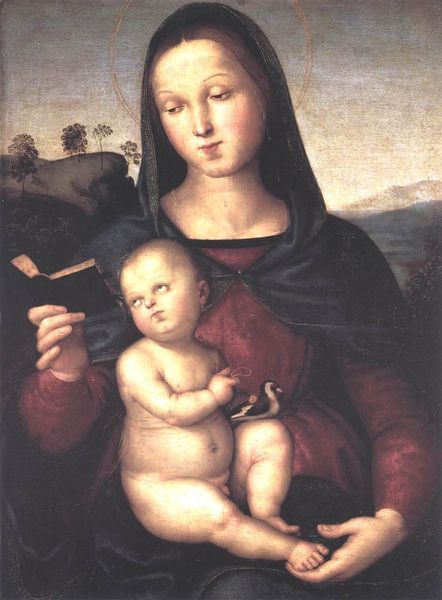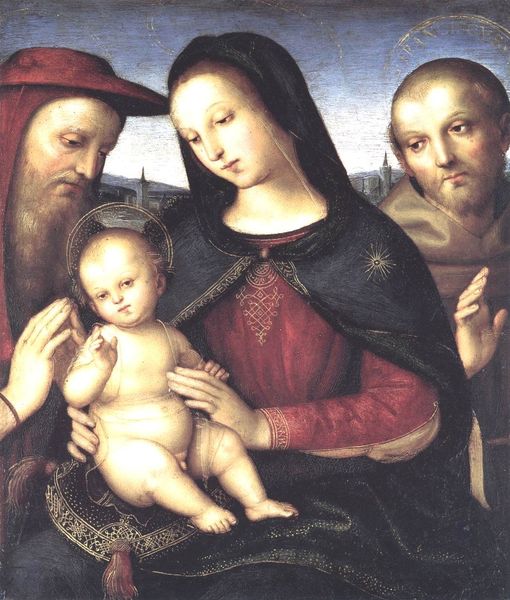
painting, oil-paint
#
portrait
#
high-renaissance
#
painting
#
oil-paint
#
figuration
#
history-painting
#
italian-renaissance
Dimensions: 69 x 50 cm
Copyright: Public domain
Curator: Take a moment to observe the “Diotalevi Madonna,” an oil painting completed by Raphael around 1503, now residing in the Staatliche Museen zu Berlin. Editor: There’s such a melancholic, almost foreboding aura, isn't there? Even the light seems to drain a bit of color from the figures, pushing forward only somber feeling. Curator: Absolutely. Look closer, and you'll notice how Raphael employs symbolic details. The cross-bearing John the Baptist points to a future filled with struggle. While it may seem counter-intuitive, such a device was commonplace during this historical and cultural period, to foreshadow iconic moments. Editor: That cross seems almost comically large for the infant John the Baptist to manage, as though an entire destiny could come crashing down any second now! And juxtapose him next to Jesus...there is a lot of visual weight between those two toddlers, don't you think? Curator: I see it differently, because to me that weight conveys burden rather than imbalance. See how she looks slightly downwards in acceptance, resignation even, as she is caught between the future sacrifices for humanity. As with many artists in the Renaissance, such work operates like psychological insight, where artists, often unwittingly, inject into the portrait the undercurrents and preoccupations of the moment in time, in order to represent those figures "more realistically". Editor: It also feels a bit as if something’s missing – a certain joy, a palpable motherly warmth that we might expect. But of course, this is High Renaissance portraiture, and as you put it, imbued in art history these portraits do speak with much psychological nuance of what can not be so explicitly articulated otherwise. It makes the whole piece strangely compelling despite that quiet restraint. Curator: Ultimately, Raphael achieves a wonderful study on motherly anticipation through a lens of symbols and emotions. The longer I view it, the more those undercurrents reveal. Editor: Indeed, it is hard not to linger when gazing at an honest depiction that, for better or for worse, does capture something timeless.
Comments
No comments
Be the first to comment and join the conversation on the ultimate creative platform.
